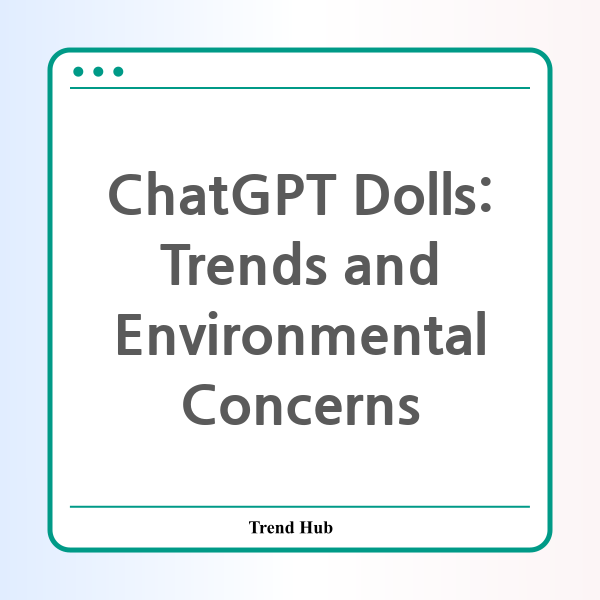* This website participates in the Amazon Affiliate Program and earns from qualifying purchases.

Are ChatGPT action dolls the new trend taking over your social media feeds? With the rise of generative AI tools like ChatGPT and Copilot, many people are transforming their selfies into miniature action figures and dolls, but not everyone is thrilled about this phenomenon. Let’s dig into what these AI dolls are, the appeal behind them, and the significant concerns surrounding their creation.
What Are ChatGPT Action Dolls?
In essence, ChatGPT dolls are customized action figures or dolls created using generative AI technology. Users upload their selfies along with specific instructions detailing the desired design elements, including outfits, accessories, and even the packaging style reminiscent of iconic toys like Barbie. This process is simple and often results in unique and entertaining renditions of one’s likeness.
Why This Trend Is Exploding
As with many viral trends, the fear of missing out (FOMO) plays a huge role in driving participation. People enjoy sharing their personalized dolls on social media platforms, contributing to a sense of community and engagement. According to analysts, generative AI lowers the barriers to content creation, enabling users to participate in trends effortlessly. As a result, it has become common to see a plethora of AI-generated content flooding our feeds.
Concerns About AI Dolls
Despite the light-hearted nature of the AI doll trend, significant concerns have arisen regarding its environmental impact and ethical implications. Some notable issues include:
- Energy Consumption: The data centers powering AI tools like ChatGPT consume immense quantities of electricity. Estimates suggest that the energy used for AI can exceed the total electricity consumption of entire countries, raising alarms about sustainability.
- Data Privacy: The use of copyrighted materials to train AI models without appropriate compensation poses a threat to intellectual property rights. Concerns are emerging surrounding how these images and dolls are generated and whether they respect privacy and ownership.
- Cultural Impact: The blending of brands and characteristics without accountability can potentially dilute cultural nuances and present ethical dilemmas in representation and authenticity.
Industry experts urge caution. The trend is described as a “triple threat” to our privacy, culture, and planet, prompting advocates to call for more responsible use of AI technologies.
Testing the AI Doll Creation Process
Creating your own ChatGPT doll can be a fun experiment; however, the process is not without its challenges. Users must detail their requests with precision. As one technology editor notes, even a simple attempt at generating an accurate likeness can lead to unexpected results, ranging from overly cartoonish to drastically altered features like aging or misrepresented eye color. This inconsistency can become frustrating, especially given the time and resources consumed by the AI during the process.
Conclusion: A Trend Worth Considering
While creating ChatGPT action dolls can be entertaining, it’s essential to weigh the fun against potential environmental and ethical consequences. Trends are fleeting, but the impact of our digital behaviors, particularly in terms of energy consumption and privacy rights, can have lasting effects. Before jumping on the bandwagon, consider how the technology works and the responsibility we hold as users. True engagement with generative AI should promote creativity while respecting our planet and our fellow creators. As this trend evolves, let us seek balance and mindfulness in our digital interactions.
* This website participates in the Amazon Affiliate Program and earns from qualifying purchases.